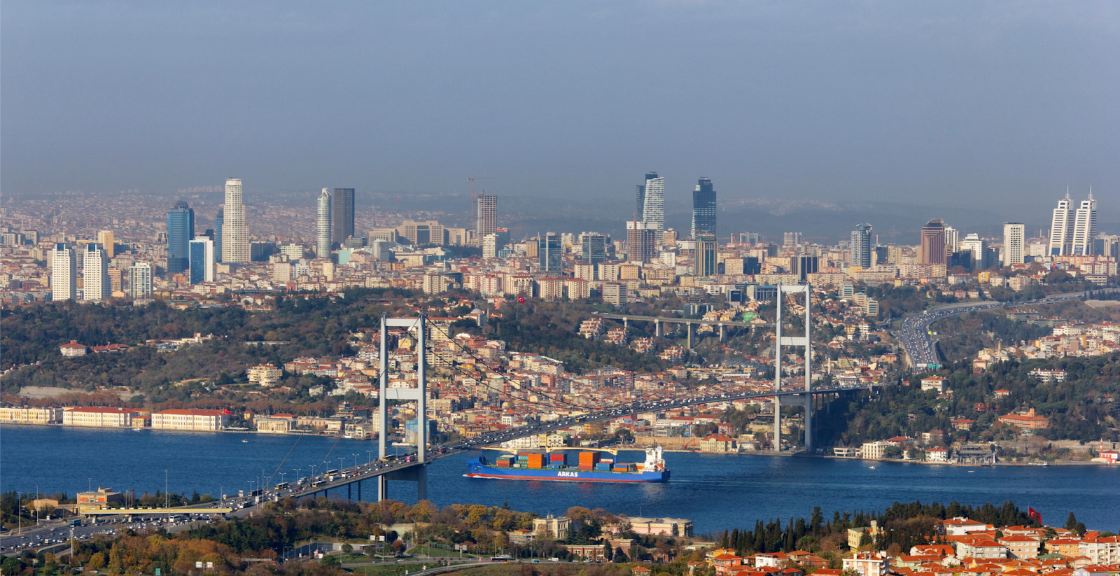Exploring the Bosphorus: Where East Meets West
The Bosphorus is a captivating waterway that serves as the natural boundary between Europe and Asia in Istanbul, Turkey. Known for its historical significance, stunning views, and vibrant cultural heritage, the Bosphorus is a must-visit destination for anyone exploring Istanbul.

Geography and Location
The Bosphorus is a narrow, winding strait that connects the Black Sea to the Sea of Marmara, dividing the city of Istanbul into its European and Asian sides. This geographic feature has played a pivotal role in the history, culture, and commerce of the region for centuries.
Historical Significance
The Bosphorus Strait in History
The Bosphorus has been a vital transportation route for millennia, serving as a key passage for trade and military campaigns.
It has witnessed the rise and fall of empires, including the Byzantine and Ottoman Empires, leaving behind a legacy of architectural marvels and historical landmarks along its shores.
Iconic Palaces and Mansions
One of the most famous landmarks along the Bosphorus is the Dolmabahçe Palace, a stunning example of Ottoman architecture. Other notable sites include the Beylerbeyi Palace and the Yıldız Palace, each offering a glimpse into the opulent lifestyles of the Ottoman sultans.
Cruising the Bosphorus
Bosphorus Boat Tours
A popular way to experience the Bosphorus is by taking a boat tour. These tours offer panoramic views of the city's skyline, historic landmarks, and the serene beauty of the strait. Sunset and dinner cruises are particularly enchanting, providing a magical backdrop as the city lights come to life.
Crossing the Bosphorus Bridges
Istanbul is also known for its impressive Bosphorus bridges, including the Bosphorus Bridge (15 July Martyrs Bridge) and the Fatih Sultan Mehmet Bridge.
These bridges are engineering marvels and connect the European and Asian sides of Istanbul, making it possible to drive or walk between the two continents.
Villages and Neighborhoods
The Bosphorus is lined with charming villages and neighborhoods on both sides, each with its own unique character:
European Side
- Ortaköy: Known for its vibrant atmosphere, lively markets, and the iconic Ortaköy Mosque.
- Bebek: A picturesque district with upscale restaurants and cafes along the waterfront.
- Üsküdar: Home to historical sites like Maiden's Tower and Şemsi Pasha Mosque.
Asian Side
- Kadıköy: A bustling neighborhood with a vibrant food scene and a lively street market.
- Çengelköy: Famous for its traditional wooden houses and waterfront tea gardens.
- Beykoz: Offers a tranquil retreat from the city with lush greenery and Ottoman-era mansions.
Culinary Delights
Exploring the Bosphorus wouldn't be complete without indulging in its culinary delights:
Seafood:
- Savor fresh seafood dishes, including grilled fish and mezes, at waterside restaurants.
Bosphorus-side Cafes:
- Enjoy Turkish tea or coffee at charming cafes with stunning Bosphorus views.
Traditional Turkish Desserts:
- Treat yourself to baklava, Turkish delight, and künefe at local sweet shops.
Conclusion
The Bosphorus is more than just a body of water; it's a living testament to Istanbul's rich history and dynamic culture. Whether you're taking a leisurely boat tour, exploring historic palaces, or savoring Turkish cuisine by the water, the Bosphorus offers a captivating journey where the past and present seamlessly intertwine, and where the continents of Europe and Asia converge.
To help us improve